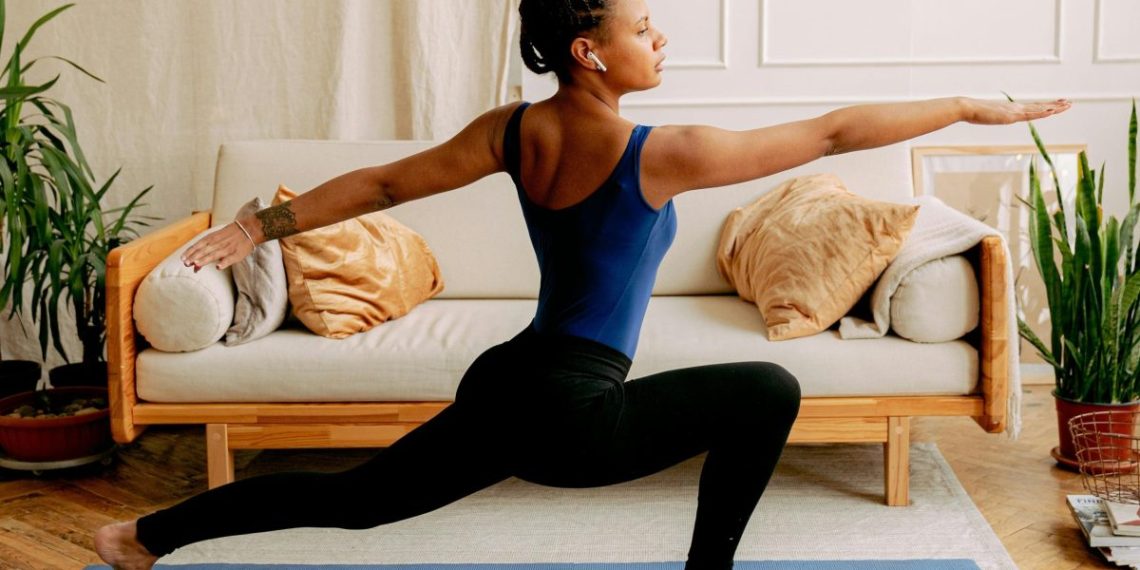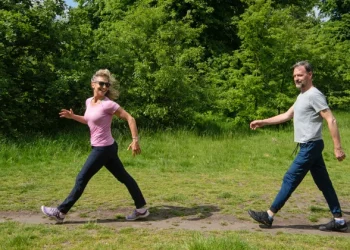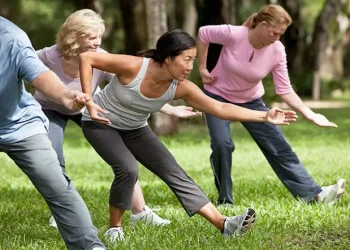Body awareness—the conscious perception of your body’s position, movement, and sensations in space—is a fundamental yet often overlooked aspect of physical and mental well-being. While we navigate the world in our bodies every day, most of us operate on autopilot, disconnected from the intricate feedback our nervous system constantly provides. Developing greater body awareness through targeted exercises can transform not only your physical performance but also your mental clarity, emotional regulation, and overall quality of life.
This guide explores three interconnected dimensions of body awareness: proprioception (your sense of body position), mindful movement (conscious, intentional physical action), and kinesthetic intelligence (the ability to use your body skillfully and expressively). Together, these elements form the foundation of what movement specialists call “somatic awareness”—a deep, integrated understanding of your physical self.
Understanding Proprioception
Proprioception, often called the “sixth sense,” is your body’s ability to perceive its position and movement in space without relying on vision. Specialized receptors in your muscles, tendons, and joints constantly send information to your brain about body position, muscle tension, and movement velocity. This internal GPS system allows you to touch your nose with your eyes closed or walk through a dark room without stumbling.
Strong proprioception is essential for balance, coordination, injury prevention, and athletic performance. However, proprioceptive abilities can decline due to aging, injury, or simply lack of use. The good news is that proprioception can be trained and enhanced through specific exercises.
Proprioception Exercises
Single-Leg Balance Progressions
Begin with the fundamental single-leg stance. Stand on one leg for 30-60 seconds, maintaining steady balance. As this becomes comfortable, progress through these variations:
- Close your eyes while balancing
- Turn your head slowly from side to side
- Reach your arms in different directions
- Stand on an unstable surface like a pillow or balance pad
- Add upper body movements like arm circles
- Perform small squats on one leg
Balance Board Training
Using a wobble board or balance disc, practice maintaining equilibrium while the surface shifts beneath you. Start with simple weight shifting, then progress to single-leg balance, gentle squats, and eventually catching and throwing a ball while balanced. This challenges your proprioceptive system to make constant micro-adjustments.
Tandem Walking
Walk heel-to-toe in a straight line as if on a tightrope. This narrows your base of support and requires precise proprioceptive feedback. For added challenge, walk backward, close your eyes, or carry an object above your head.
Joint Position Replication
Close your eyes and have a partner move your arm or leg to a specific position. Hold it for a moment, then return to neutral. Try to recreate that exact position. This exercise directly trains your ability to sense and remember joint angles.
Balance Beam Work
If you have access to a low balance beam or even a curb, practice walking forward, backward, and sideways. Add movements like dips, turns, or pauses in various positions. This combines balance, proprioception, and spatial awareness.
Mindful Movement Practices
While proprioception focuses on sensing where your body is, mindful movement emphasizes conscious awareness during motion. It’s the practice of being fully present with physical sensations, breath, and the quality of movement itself. This approach transforms exercise from mechanical repetition into a meditation in motion.
Mindful Movement Exercises
Body Scan Walking
Walk slowly, bringing your attention systematically to different body parts. Notice how your feet contact the ground—heel, midfoot, toe. Feel your ankles, knees, and hips as they move. Observe your spine’s natural undulation, your shoulders, arms, and head position. This practice develops moment-to-moment awareness of your moving body.
Breath-Coordinated Movement
Synchronize simple movements with your breathing. For example:
- Raise your arms on the inhale, lower on the exhale
- Step forward on the inhale, back on the exhale
- Twist gently to one side on the inhale, return to center on the exhale
This practice integrates breath awareness with physical movement, creating a unified mind-body experience.
Slow Motion Exploration
Choose any everyday movement—standing from a chair, reaching for an object, turning around—and perform it in extreme slow motion. Notice every micro-movement, every muscle engagement, every shift in weight. This magnifies proprioceptive feedback and reveals movement patterns you typically perform unconsciously.
Tai Chi and Qigong Foundations
These ancient practices epitomize mindful movement. Even basic forms like “Wave Hands Like Clouds” or “Lifting the Sky” teach weight shifting, continuous motion, and full-body integration while maintaining meditative awareness.
Feldenkrais-Inspired Exploration
Lie on the floor and explore small, gentle movements. For instance, slowly roll your head from side to side, noticing which muscles engage. Gradually expand the movement to include your shoulders, then ribs, then the entire spine. The key is curiosity rather than achievement—exploring how you move rather than what you can do.
Sensory Movement Meditation
Focus on different sensory aspects of movement. Spend five minutes noticing only tactile sensations (clothing on skin, air temperature, ground contact). Then shift to noticing only internal sensations (muscle engagement, joint movement, breath). Finally, notice spatial awareness (distance from walls, size of movements, your body’s relationship to the environment).
Developing Kinesthetic Intelligence
Kinesthetic intelligence is your ability to control, coordinate, and express yourself through bodily movement. It encompasses skill, grace, timing, and the capacity to learn new movement patterns efficiently. While some people seem naturally gifted physically, kinesthetic intelligence can be developed through varied movement experiences and conscious practice.
Kinesthetic Intelligence Exercises
Mirror Tracing
Stand facing a partner at arm’s length. One person leads by moving their hands, arms, and body slowly through space while the other mirrors these movements as precisely as possible. Switch roles. This develops spatial awareness, timing, and the ability to replicate observed movements.
Blind Drawing
Close your eyes and draw large shapes in the air with your hand—circles, figure-eights, spirals. Try to make them smooth and consistent. Then attempt to trace specific pathways, like drawing a square or writing your name in the air. This trains fine motor control and spatial awareness without visual feedback.
Cross-Lateral Movements
Exercises that cross the body’s midline enhance interhemispheric communication and coordination. Examples include:
- Touch your right hand to your left knee, alternating sides
- Draw a figure-eight horizontally in front of you
- Pat your head with one hand while rubbing your stomach with the other, then switch
- March in place touching opposite elbow to knee
Rhythm and Tempo Variation
Choose a simple movement sequence (like step-touch or arm raises). Perform it at different tempos: very slow, moderate, quick, and with varied rhythms. This develops timing precision and adaptability.
Spatial Exploration
Move through space using different levels (low, middle, high), directions (forward, backward, sideways, diagonal), and pathways (straight, curved, zigzag). Combine these elements improvisationally. This expands your movement vocabulary and spatial intelligence.
Novel Movement Challenges
Regularly attempt unfamiliar physical activities: juggling, partner acrobatics, dance styles, martial arts forms, or parkour basics. Novel movements create new neural pathways and enhance overall kinesthetic learning capacity.
Proprioceptive Writing in Space
Using your whole arm or even your whole body, “write” letters or words in the air. Make them large, smooth, and controlled. Progress to writing with your non-dominant side or with your feet. This creative exercise combines literacy with physical intelligence in unexpected ways.
Integration: The Body Awareness Practice
The most powerful body awareness comes from integrating all three elements—proprioception, mindful movement, and kinesthetic intelligence. Here’s a 15-minute daily practice that weaves them together:
Minutes 1-3: Begin with grounding. Stand still with eyes closed. Feel your feet’s contact with the ground. Notice your body’s subtle sway as your proprioceptive system maintains balance. Breathe naturally and scan through your body, simply noticing without judgment.
Minutes 4-7: Move into slow, exploratory movement. Let your body move intuitively—reaching, bending, twisting, stretching. Keep movements slow enough to maintain full awareness. Notice which areas feel fluid and which feel restricted.
Minutes 8-11: Add balance challenges. Practice single-leg balances, weight shifts, and slow transfers from one position to another. Close your eyes periodically to heighten proprioceptive awareness.
Minutes 12-15: Conclude with free movement exploration. Allow yourself to move more dynamically, playing with rhythm, direction, and creative expression. Stay present with sensations while enjoying the kinesthetic pleasure of movement.
The Benefits of Enhanced Body Awareness
Regular body awareness practice yields remarkable benefits. Physically, you’ll experience improved balance, coordination, and movement efficiency, reducing injury risk. Athletes find their performance enhanced through better body control and proprioceptive feedback. Those recovering from injuries accelerate healing by re-establishing neural pathways.
Mentally, body awareness exercises function as moving meditation, reducing stress and anxiety while improving focus. The practice creates a bridge between mind and body, often revealing how emotions manifest physically as tension patterns or movement restrictions.
Many practitioners report enhanced emotional regulation, as increased somatic awareness helps identify and process emotions held in the body. The practice can be particularly valuable for trauma recovery, as it helps reestablish a sense of safety and agency within one’s physical self.
Body awareness is not a destination but a journey of ongoing discovery. Your body is constantly changing, and there are always deeper layers of sensation, movement possibility, and kinesthetic understanding to explore. Start with exercises that resonate with you, practice consistently, and approach the work with curiosity rather than judgment.
Whether you’re an athlete seeking performance enhancement, someone recovering from injury, or simply interested in deeper mind-body integration, these exercises offer a pathway to inhabiting your body more fully. In our increasingly digital, sedentary world, the practice of conscious embodiment becomes not just beneficial but essential—a return to the fundamental wisdom that we are not merely minds housed in bodies, but integrated beings whose physical awareness is inseparable from our overall well-being.
Begin today. Stand up, close your eyes, and simply notice where you are in space. That simple act is the beginning of a profound journey home to your body.






